All you need to know about the country sauna
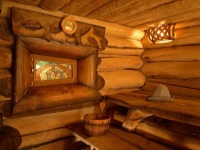
From time immemorial, the bath has been a source of health and pleasure in Russia. Nowadays its relevance has not diminished - for a long time bathing has become an accessible and very useful spa procedure. The secrets of its construction are passed from one generation to another. They will be discussed in our article.
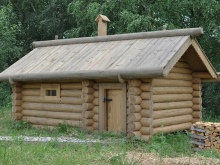
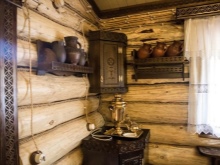
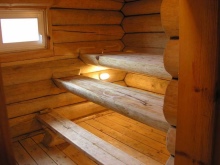
Features
Country bathhouses in Russia have a long history, the first mention of it appeared in the "Tale of Bygone Years", although some historians tend to believe that such buildings existed in the V century. However, regardless of exactly when the habit of taking a steam bath appeared, we can safely say that this tradition has been preserved to this day.
Villagers often built bathhouses on their own plots or near bodies of water, and the whole families went to bathe in them on Saturdays. That's why in Russia, and later in the Soviet Union, Saturday for a long time was considered a bathing day. Classic village bathhouses are compact wooden houses.
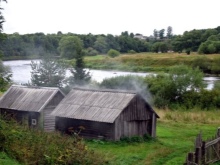
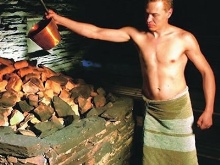

The main room of the rustic bathhouse has always been the steam room, with a furnace and wood benches. Many people confuse such concepts as rustic bath and sauna. However, these are two fundamentally different constructions, they have many differences. Here are the main ones.
- Different types of ventilation. Saunas have ventilation equipment, rustic saunas do not - the air is renewed by the open door and cracks near the ceiling.
- Difference in temperature. The air in the sauna is dry, it is heated to 120-140 degrees, in the baths it is heated to no more than 70 degrees.
- Different parameters of humidity. In the steam bath humidity is high, it stays at 70-80%, in saunas this figure does not go beyond 15%.
- Elevated temperatures in the sauna room do not allow the use of brooms, as such manipulation can cause burns on the skin. In the Russian steam room brooms are an integral part of all bathing procedures.
- Stoves in baths and saunas also have different designs. Thus, in the Russian steam room is heated by the heater, in the modern sauna it is replaced by an iron furnace.
- In terms of health benefits, there is no unambiguous opinion about what is more useful - sauna or sauna.
Here everything is very individual, everyone chooses the steam room, which is closer to the psychological and physical characteristics of man.
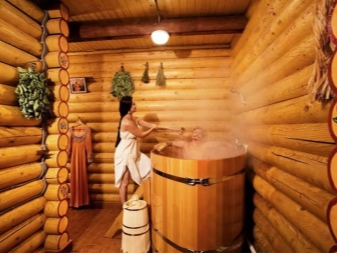
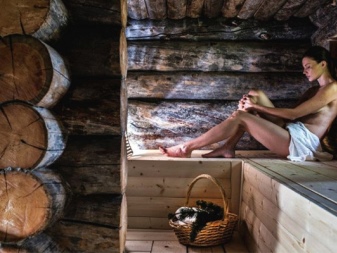
Kinds of building
Country sauna can correspond to one of the following types: white and black.

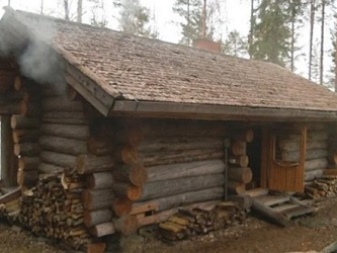
Black-style .
Such a construction looks like a chopped structure with five walls. The inner partition divides the room into a pre-bath and a steam room. The furnace in such building is formed of stones. The distinctive feature is the absence of a chimney. Under these conditions, the smoke is led out through the ajar door or specially provided slots. During heating the tar and soot from the burning firewood settles on the walls, giving them a black color, hence the name of the bath.
It should be noted that in a well-heated black bath there is maintained exceptional sterility, akin to the operating room. This is probably why midwives in the Middle Ages delivered babies in such doubles.
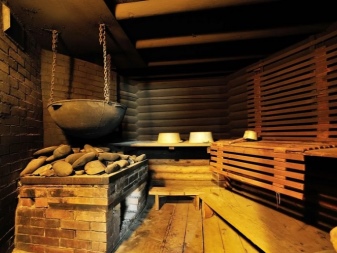
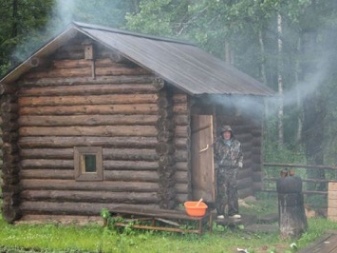
White
This type of baths appeared much later than the previous one. It does not have any special design differences, the only difference is that the furnace is equipped with a chimney, respectively, all the gases are outside the building. Much attention in the white-style baths is paid to comfort. As a rule, there is an insulated anteroom and a separate washing room. Accordingly, the cost of construction of such a bath is much higher.
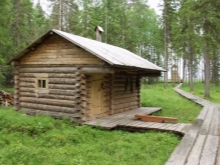
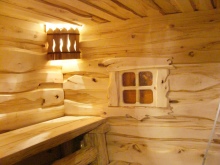
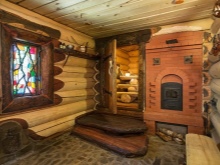
How is it arranged?
Any Russian bath can become a very comfortable and healthy room. To build it, it is not enough to choose the right construction materials and solve the issues with the number of floors of the room. Every real bath must be properly designed. Lack of attention to this point may not only create a significant discomfort for visitors, but even cause harm. Each sauna has several main rooms.
- The steam room - is the warmest place, it is equipped with benches and wide shelves. This is where the wet massage with a whisk is carried out.
- Washing room - It is necessary for sauna visitor to wash before entering steam room and to rinse afterwards rinsing all salts and slags from skin.
- Pre-bathroom - here you can leave your personal things, clothes and shoes, and after the steaming room you can sit with a samovar or a mug of cold kvass. In fact, the main purpose of this place is to create a comfortable zone for rest and relaxation.
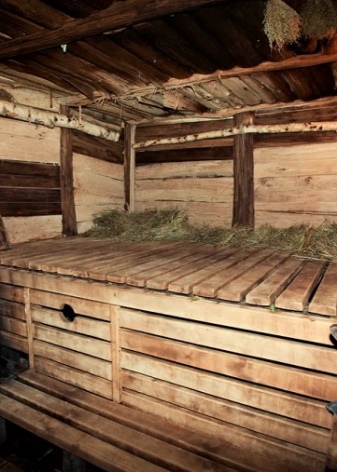
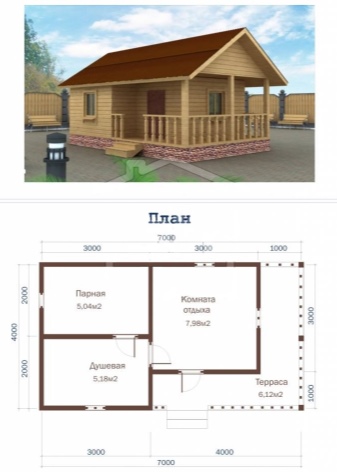
Any Russian rustic bathhouse provides for a flooded floor, when the boards are laid with a small gap. This allows all the water used to be taken outside the room. To such a design could serve for several decades without repair and replacement of individual elements, in modern saunas provide a special gutter - it is mounted in the center of the steam room. This is a practical solution, since all excess water is led outside the building. If possible, try to equip such an opening with plugs - this will prevent drafts in the cold season.
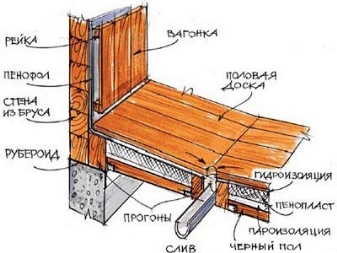
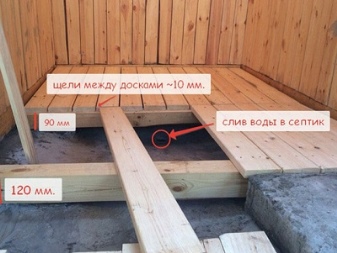
In traditional Russian baths the floor was boarded, today it is increasingly replaced by slabs covered with porcelain stoneware. This material is characterized by resistance to moisture, it is not subject to rotting, therefore, does not require frequent repairs. The main room in the Russian bath is the steam room, most often it is mounted to the right of the door. Over the furnace hang a vat with steaming stones, it is from them comes the main heat and heated steam. In the steam rooms there are several shelves, located at different heights.
In accordance with the laws of physics, the heated air rises up, to the ceiling. Accordingly, the higher the shelf is, the hotter it will be.
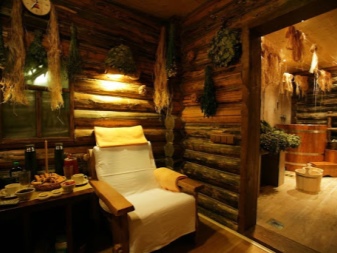
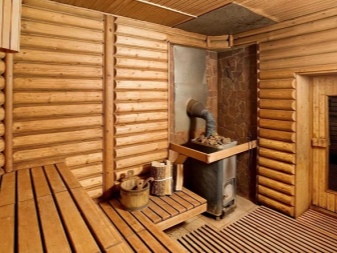
Roof
Roofing in the bath is performed as a single or double slope, less often the roof is given broken forms. One-pitch roof is built mainly when the bath approaches closely to the house. The main advantage of this solution is the ability to reduce the cost of building a roof. Widespread gable covers log structures, and if the height of slopes enough, and the ceiling overlap is made qualitatively, then in the underlay area can easily organize a place of rest or make a residential attic.
The height of the ridge is determined depending on the wishes of the owner of the bath. Increasing the angle can significantly improve the flow of precipitation downwards, but at the same time it will repeatedly increase the cost of installation work and increase the risk of collapse of heavy roof coverings. For support structures of the roof usually use overlapping beams or mauerlats. The first option is relevant for wooden structures, and the second is in demand mainly in the construction of baths made of foam concrete, aerated concrete, as well as sandcrete, slag concrete or bricks.
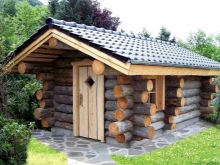
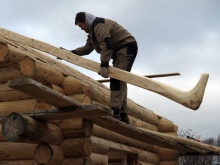
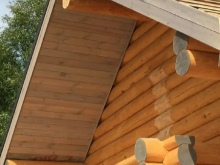
Walls
Recently, the walls of the bath began to decorate with SIP-panels, which are widely in demand in low-rise construction. They are a construction of two chip boards, the gap between which is densely filled with polystyrene foam. This material has a low weight, so you can build a bath from such blocks even without a heavy foundation, and in general the whole work is quite fast.
The degree of thermal insulation is high and surpasses not only cinder blocks, but also bricks. The only disadvantage of sandwich panels is that you can hardly do the job yourself - only trained professionals can erect the frame.
In addition, the use of this material requires mandatory waterproofing of the walls, usually for this laying foil, leaving a small air gap between it and the walls.
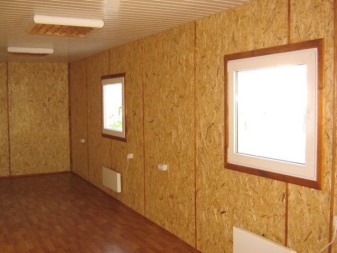
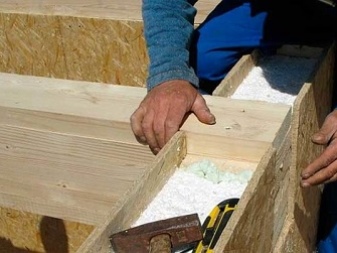
Traditionally, the walls in the Russian baths are erected from wood. Preferably use softwood lumber - it holds shape for a long time, while holding heat well. Usually in the course are pine and spruce varieties, procured in the northern regions of our country. Not a bad alternative is considered linden and aspen - a durable material, in addition, they are much cheaper than solid wood. Important: in the construction of wooden baths, you should keep in mind that wood often suffers from shrinkage. That is why only well dried raw materials can be used for construction, and after installing the walls you must wait a while for the wood to settle.
The main disadvantage of wood is its hygroscopicity, its tendency to accumulate moisture. This causes the destruction and deformation of the material, contributes to the appearance of rot, mold and mildew. To protect the wood, it is necessary to cover it with antiseptic impregnation and fire retardants, as well as arrange waterproofing. To do this, you can use aluminum foil or plastic sheeting - usually they are mounted over a layer of insulation and fixed with a stapler or small nails. You can use bricks or building blocks to build the walls. Usually partitions are made in 1/2 or 1/4 brick. Inside, they must be insulated with slab material and waterproofed.
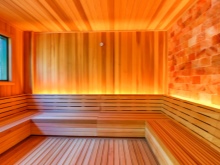
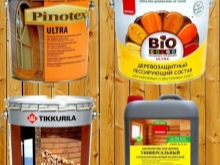
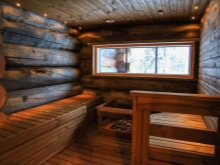
Foundation
The foundation for a traditional Russian bath usually make a strip and pillar - the choice depends on the overall severity of the structure and the type of material used. So, Pillar foundation is optimal when there is a difference in elevation, high groundwater or a high risk of flooding during heavy precipitation and flooding. The foundation of this type is optimal for loamy soils, as well as with a high content of gravel of small fraction or coarse sand in the soil. It is desirable to build a strip foundation on the levelled sections of land.
When building a bath on rocky rocks and quartz-type features of the foundation do not have any importance.
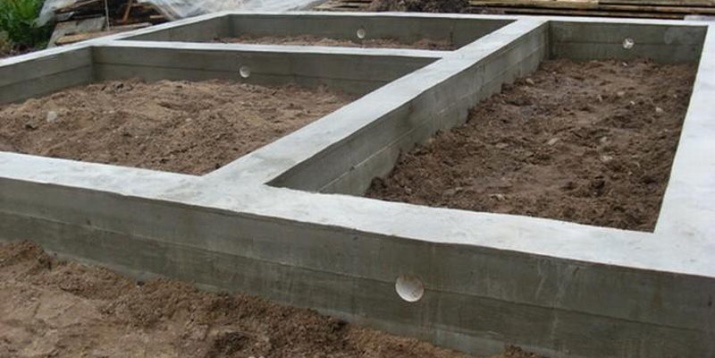
Interior finishing
Finishing the bath from the inside is extremely important for the owners. Most often used is battens, siding or various types of ceramic tiles - they are characterized by high plasticity, on sale are available in a wide variety of shades and textures. The use of plastic and other ultramodern materials is not recommended, since the Russian bathhouse has traditionally been and remains an original corner with its own specific aesthetic, and the use of creative materials will break the original Russian color of this place.
For small structures can be a good solution to metal siding - it is not flammable, has good thermal conductivity and durability. If the budget allows, you can buy imitation bar, the technical and operational characteristics of which will satisfy the most demanding taste. This material is environmentally safe, its installation does not present any difficulties, and such a coating serves for at least 20 years.
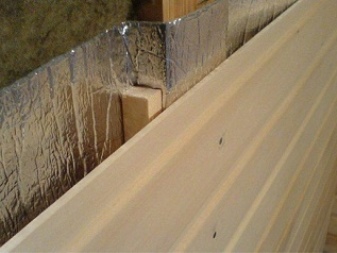
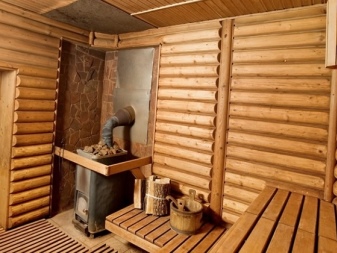
What to heat with?
The fundamental point when designing a Russian bathhouse is to determine how to heat it in winter. To warm the air masses and give the room an optimal heat pulse, electric current, hard coal or natural gas can be used. In modern rooms, heat floors are often installed and infrared heaters are installed. Well, and, of course, many lovers of steam give preference to the traditional Russian fuel - firewood.
Use natural gas for heating in the steam room is not always possible, because it needs to meet all the exact requirements of safety. In addition, such a project requires mandatory coordination with the Technical Supervision, which costs the cottage owner "a pretty penny.
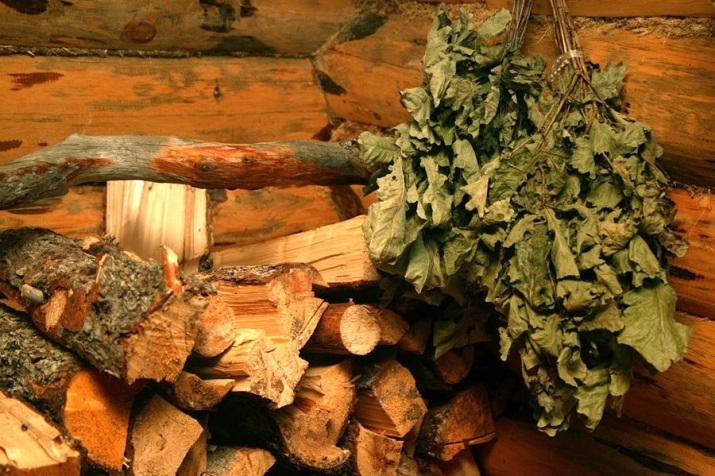
But electric heating does not require any complex approvals, but it is more expensive than gas heating, since in this case requires the arrangement of the supply line.
Infrared heating is optimal for those who are able to pay a large sum at once to save later. The use of underfloor heating in bathing rooms is rather of secondary nature, because they do not provide steam and water heating. The classic solution for lovers of Russian rustic baths has been and remains the wood-burning hearths. This is not surprising, because even the most modern furnace materials are not able to form a cozy atmosphere and create a useful microclimate.
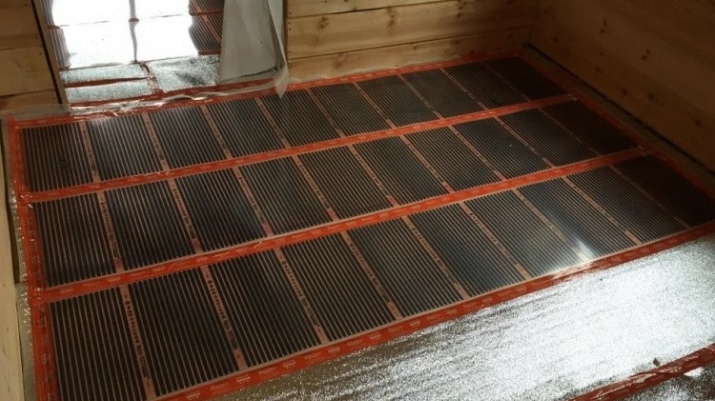
Examples of design
Bathing in a bathhouse was and still is popular in the Russian countryside.
- Old bathhouses look simple both outside and inside, nevertheless they create a unique atmosphere of Russian village.
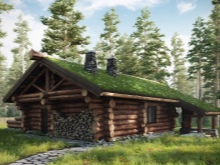
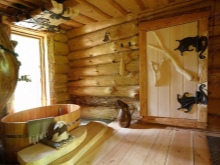
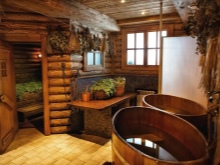
- Mini-baths are built on small plots, these are budget designs that are installed mainly for seasonal use.

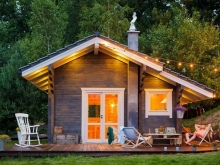
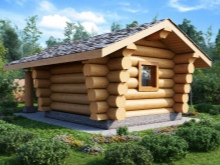
- Baths for year-round use are made beautiful and spacious, paying special attention to the stylistics of the interior.

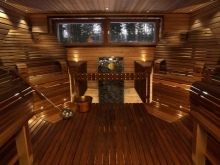
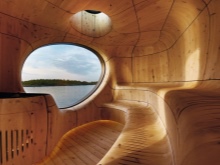
The following video will give you an in-depth review of the rustic bathhouse.




